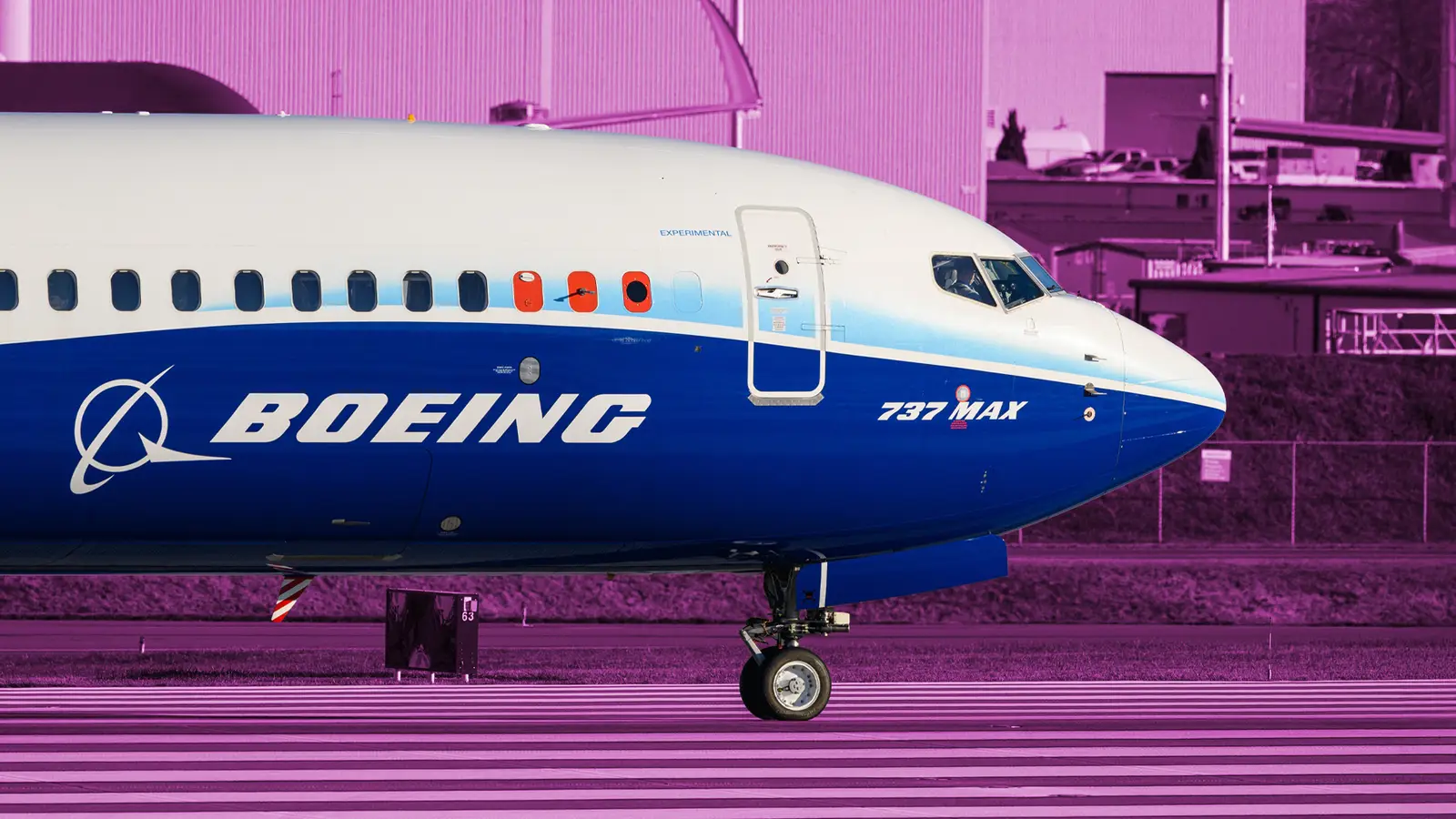Copyright Simple Flying

The Boeing 737 is one of the most popular commercial aircraft of all time, and the launch of the 737 MAX series in 2016 brought the aircraft into the 21st century. While much attention has been paid to its engines and flight control systems, the fuselage of the 737 MAX also includes important changes, both subtle and structural, that distinguish it from previous 737 variants. In this article, we will take a closer look at how the fuselage of the Boeing 737 MAX differs from those of its predecessors, shedding light on its design and how Boeing adapted a classic aircraft to better suit the modern-day commercial market. Same Width But Different Length The fuselage of the Boeing 737 MAX looks very much like that of its predecessors - both the 737NG and even earlier variants such as the Original and Classic series. The 737's fuselage has a diameter of around 148 inches, which has remained consistent throughout the aircraft's long history. Maintaining this fuselage width was crucial for airlines because it ensured compatibility with existing airport gates, jet bridges, and seating layouts. However, Boeing did make several key modifications to the 737 MAX to maximize its efficiency and performance, one of the most visible of which is to the length of the fuselage. The 737 MAX comes in four main variants, each offering different seating configurations, ranges, and passenger capacities. Each aircraft also has a different length, as shown in the table below, compared to the 737NG series: Increased Use Of Composite Materials Another area where the Boeing 737 MAX fuselage differs is in its use of materials. In recent years, Boeing has increasingly adopted advanced aluminum alloys in the fuselage skins and frames of its aircraft, and newer alloys like those used in the 737 MAX provide better strength-to-weight ratios. This is crucial because the 737 MAX series is equipped with larger, heavier engines compared to the 737NG series, and therefore, any weight saved in the fuselage helps offset the additional engine weight, allowing the aircraft to maintain similar operating economics. In addition to stronger alloys, Boeing also applied more extensive use of composite materials in non-structural elements on the 737 MAX. For example, some of the panels and interior components found on the 737 MAX are lighter and more durable, helping to contribute to fuel efficiency gains, which is one of the key selling points of the 737 MAX series. CFM International LEAP-1B Engines Another major difference in the make-up of the Boeing 737 MAX series compared to its predecessors is in its engines. The CFM International LEAP-1B turbofan engines found on the 737 MAX are larger in diameter than those on the 737NG, which brought with it its own unique challenge for Boeing’s engineers. Unlike Airbus, which tends to design entirely new aircraft for each generation, Boeing chose to use the 737's existing low-to-the-ground landing gear, but integrating larger engines without redesigning the landing gear required several structural modifications. The solution developed by Boeing involved flattening the bottom of the engines slightly and repositioning engine nacelles forward and higher relative to the wing. This change ensured sufficient ground clearance, but also led to the repositioning of systems within the fuselage itself and reinforcing certain fuselage frames near the wing root to accommodate new loads and stresses. The Boeing 737 MAX's Aerodynamic Features The fuselage of the Boeing 737 MAX is slightly more aerodynamically refined than that of its predecessors. While the basic cylindrical shape remains, the nose section has been subtly reshaped to improve airflow over the radome and cockpit windows, reducing drag and enhancing fuel efficiency. Small adjustments to panel seams and antenna housings were also made to optimize aerodynamics. These refinements may seem minor, but for a commercial aircraft, even small reductions in drag translate to millions of gallons of fuel saved over its operational life. Such improvements also contribute to slightly higher cruise speeds, lower emissions, and a quieter cabin environment, making the Boeing 737 MAX more efficient and environmentally friendly while maintaining passenger comfort. As airlines across the world look to reduce their impact on the environment and meet ambitious sustainability targets, this fuel efficiency is likely to be one of the key features behind the success of the 737 MAX program. Safety & Regulatory Differences Modern aircraft such as the Boeing 737 MAX are required to meet stricter airworthiness and structural integrity standards than earlier aircraft, and the 737 MAX fuselage incorporates a range of safety enhancements to address these requirements. The fuselage skin and key structural components have been designed to conduct lightning strikes more effectively, improving protection compared to earlier 737 models. At the same time, the Boeing 737 MAX's structure is built to endure repeated pressurization cycles over the aircraft’s lifetime, ensuring the fuselage remains resilient even under the intense operational demands of busy airline fleets. These changes may not be immediately visible to passengers, but they play a critical role in the aircraft’s overall safety and reliability. In addition to structural improvements, the Boeing 737 MAX fuselage integrates enhanced fire and emergency safety measures - panels have been strategically reinforced, and electrical and hydraulic systems are carefully routed to reduce risks in the event of a fire or system leak. These adaptations allow the aircraft to meet modern regulatory requirements while maintaining the familiar external shape that has made the 737 family so recognizable. Together, these design choices demonstrate how Boeing has managed to modernize a classic aircraft, balancing safety, efficiency, and operational flexibility without drastically altering its iconic appearance. About The Boeing 737 MAX The Boeing 737 MAX is one of the most talked-about airplanes in modern aviation. The aircraft comes in four variants - the 737 MAX 7, 737 MAX 8, 737 MAX 9, and 737 MAX 10, although only the 737 MAX 8 and 737 MAX 9 are currently in commercial service due to delays in obtaining the required certification from the US Federal Aviation Administration (FAA) for both the 737 MAX 7 and 737 MAX 10. Despite its modern technology, efficient operational performance, and impressive sustainability credentials, the Boeing 737 MAX program has been plagued by problems and setbacks, most notably the tragic crashes of Lion Air Flight 610 in October 2018 and Ethiopian Airlines Flight 302 in March 2019, which resulted in the deaths of all 346 passengers and crew members onboard both aircraft. Subsequent investigations concluded that these incidents were linked to the aircraft's MCAS (Maneuvering Characteristics Augmentation System). As a result, the global 737 MAX fleet was grounded for over a year while Boeing addressed the issue. In addition to these high-profile accidents, the Boeing 737 MAX encountered another serious problem in January 2024, when a door plug blew out on the 737 MAX 9 aircraft that was operating Alaska Airlines Flight 1282. The National Transportation Safety Board (NTSB) investigation revealed problems with the bolts securing the door plug. In addition to this, ongoing supply chain issues stemming from the COVID-19 pandemic continue to slow deliveries of 737 MAX aircraft to airlines around the world, although the FAA recently gave Boeing the green light to increase deliveries. However, despite the controversies, airlines continue to order the Boeing 737 MAX because it is one of the most efficient single-aisle jets on the market, going head-to-head with the Airbus A320neo family. The table below shows North America's largest operators of the 737 MAX series, according to the latest data from ch-aviation: As the table shows, Southwest Airlines is by far the world's largest operator of the Boeing 737 MAX, with the aircraft playing a major role in the fleet of the low-cost carrier. Flight tracking data from Flightradar24 shows that in recent days, Southwest Airlines has deployed its fleet of 737 MAX aircraft on a variety of routes, including Phoenix Sky Harbor International Airport (PHX) to Los Angeles International Airport (LAX) and Houston Hobby Airport (HOU) to Denver International Airport (DEN). The Boeing 737 MAX's popularity shows no sign of slowing down anytime soon, and we are likely to see more and more of the aircraft in the skies above us over the coming years, particularly once the 737 MAX 7 and 737 MAX 10 enter commercial service. Although they are often subtle, those with a trained eye should be able to spot the differences in the fuselage of the Boeing 737 MAX series compared to earlier 737 variants.



